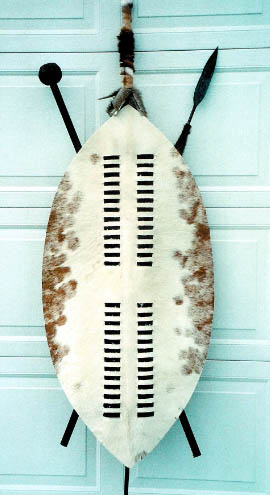shaZulu ships are designed for speed and firepower; consequently, their weakness is in their thin armor. The shaZulu doctrine of aeronaval combat is to strike quickly and then withdraw, repeating as necessary until the enemy is defeated. A favorite tactic is to lure an enemy ship out of formation with a seemingly-helpless frigate, then pounce on it with destroyers and battlecruisers.
Design notes: The shape of the ships is actually inspired by the shape of the traditional Zulu cowhide shields, known as isihlangu, rather than a standard boat shape. I kept the VSF-looking round turrets, funnels, and torpedo tubes in order to keep the ships from looking too futuristic against other 'Nefs.
An example of a Zulu shield:

Group photos:
Ithayiga ("Tiger")-Class Frigate
Umdumo ("Thunder")-Class Bombard Frigate
Gwaza ("Slaughter")-Class Destroyer
Ingwe ("Leopard")-Class Light Cruiser
Inkemba ("Sword")-Class Heavy Cruiser
Isijula ("Javelin")-Class Battlecruiser
Siyonqoba ("Conqueror")-Class Battleship
Ukhozi ("Eagle")-Class Fighter Carrier





















































